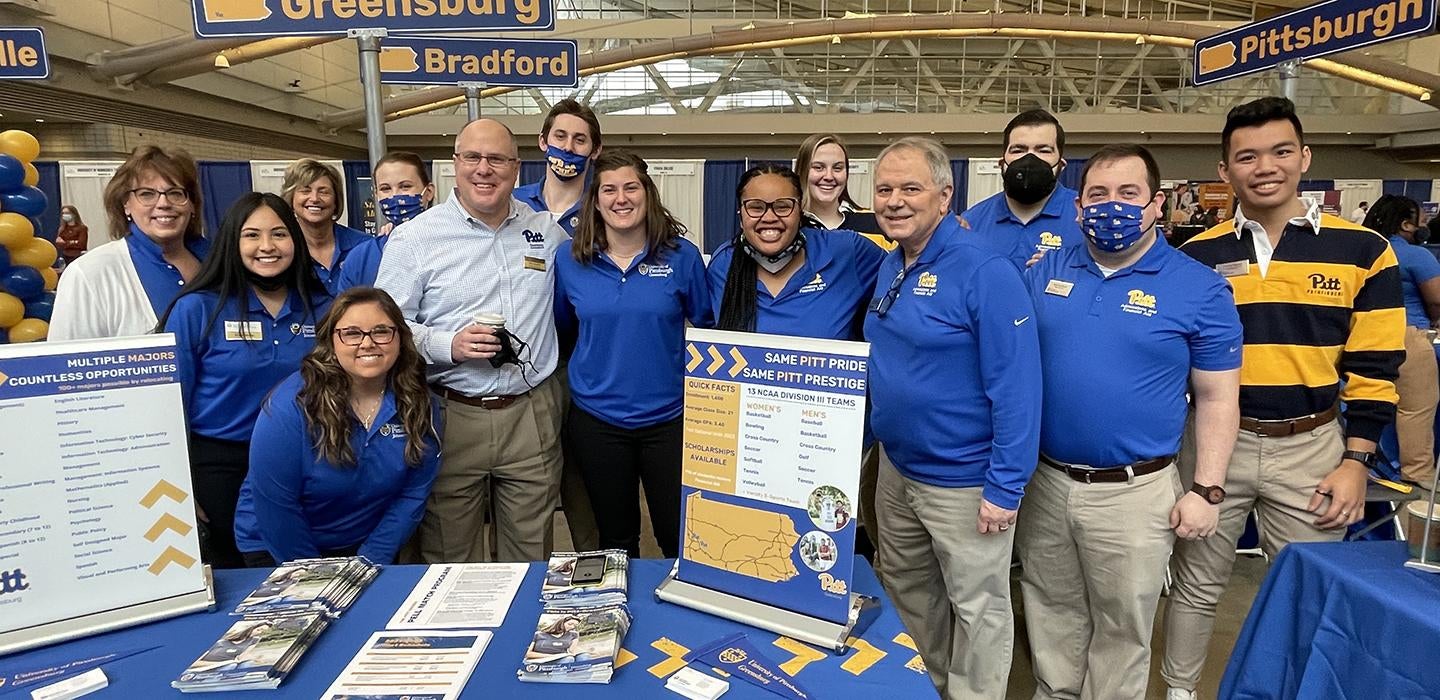
Subscribe to Pittwire Today
Get the most interesting and important stories from the University of Pittsburgh.Thousands of students across Pennsylvania already experience the benefits of a world-class Pitt education.
And across the University of Pittsburgh’s five campus system, nearly 30 percent of all undergraduates — 5,000 students total — hail from rural reaches of the state.
“We want all students in Pennsylvania — and especially students in communities with fewer college options — to see themselves at the University of Pittsburgh,” said Marc Harding, Pitt’s vice provost for enrollment.
Enter Daryl Burleigh.
Hired last summer, Burleigh is helping Pitt distinguish itself as one of the first higher education institutions in the country to employ a recruiter focused solely on rural populations.
Burleigh visits high schools and talks with students in some of the state’s most remote communities. He talks with students who, simply due to geography, might not have considered Pitt in their college plans.
“Schools in rural areas don’t get the attention from college reps that suburban schools might get,” Burleigh said.
That’s a bias seen across the United States, and it isn’t new.
Big-name schools historically haven’t designated resources for recruiting in rural districts. These areas — home to smaller populations and lower household incomes — are seen as less profitable to visit compared to densely populated and economically robust communities.
72% of Pennsylvania’s 67 counties are rural, and Pitt students hail from all but five. Nationally, the state ranks near the bottom — at No. 40 — in terms of the percentage of adults who have advanced their education beyond a high school diploma.
Harding views access to higher education similar to access to high-speed internet. “If you're in rural America but you don't have access to the best, fastest resources, how can you optimize your potential?”
Over time, this lack of access impacts a rural community’s ability to effectively compete at every level of society.
Why the right recruiter is key
The single most important factor in a rural recruiter’s success is the individual picked for the position, said Molly Swagler, Pitt’s executive director of enrollment outreach and assistant vice provost for enrollment.
The right person — Burleigh — was hard to find, she said, “because it takes a very special person who knows rural Pennsylvania and can understand the landscape.”
Burleigh grew up in Pleasant Mount, Pennsylvania, a farming community in Wayne County, the northeastern-most part of the state. He is the son of factory workers and a first-generation college graduate. He was employed as a college admissions officer for a university in Monroe County when he learned about Pitt’s interest in prioritizing rural recruiting.
“I was especially excited when I saw that the territory was rural Pennsylvania,” Burleigh said. “I thought, well, that's something that I think I can bring a lot to, having grown up in and graduated from a rural Pennsylvania school.”
As Burleigh began his recruiting efforts for Pitt in August 2021, he was often reminded of his own experience applying to college.
“I remember going through the process and how overwhelming things seemed,” he said. “The students who I meet on these trips seem to appreciate my backstory — and that somebody really gets where they're coming from.”
Rural schools respond
Despite his relatively short time at Pitt, Burleigh’s work is already making an impact with counselors and students throughout the state.
“It’s so nice to have Daryl so accessible because he can not only speak with the kids who are applying in the fall, but he’s there to consult with them along the way,” said Susan Sullum, a college and career counselor at Wallenpaupack High School in Hawley, Pennsylvania.
Burleigh, who has visited the school several times, has been guiding students interested in health sciences careers as they put together their applications and schedule classes for their junior and senior years of high school.
“Pitt has so many health sciences programs — they're top of the line,” Sullum said. “So, we just really take every opportunity for our kids to meet up with him.”
Of the many students who applied, she said, “I think we have a lot of kids committed to Pitt.”
Matt Fitzsimmons is a Pitt alumnus who has been working as a school counselor for 23 years. Burleigh has visited Fitzsimmons and his students at Western Wayne High School in Lake Ariel, Pennsylvania, where about 550 students attend 9th through 12th grades.
“He's actually from my hometown,” Fitzsimmons said of Burleigh, so “he can relate to being in a small town or a rural area. The fears of going from no big buildings to a lot of big buildings or from a lot of grass to not as much grass.”
But what makes Pitt and Burleigh stand out, he said, is that “not every school has that single person I can contact that easily, especially a big school like Pitt.
So far, 14 Western Wayne High School students have applied to Pitt, and nine have been accepted — including Fitzsimmons’s son Ashton, who has already committed to Pitt.
“When you actually have that person come in and can give real answers, or even give students their card and say they’ll get back to them,” said Fitzsimmons, “that means so much more to students than just dropping things off.”
By the numbers — so far
28.7 percent of Pitt undergraduates across all campuses come from rural areas — an increase of 4.2 percent from spring 2021.
6.5 percent growth in applications from rural Pennsylvania students, compared to fall 2021.
23 percent of fall 2022 students admitted to the Pittsburgh campus are first-generation college students.
— Susan Wiedel


